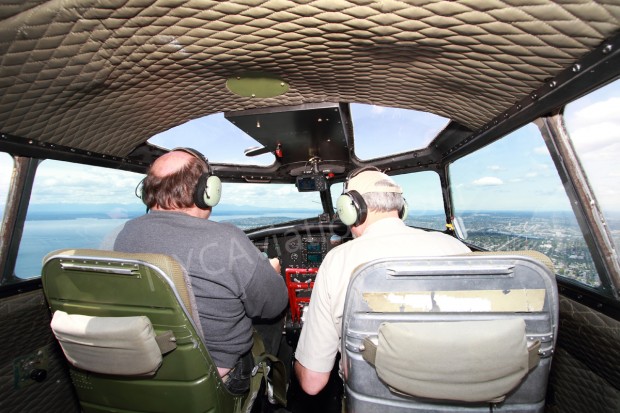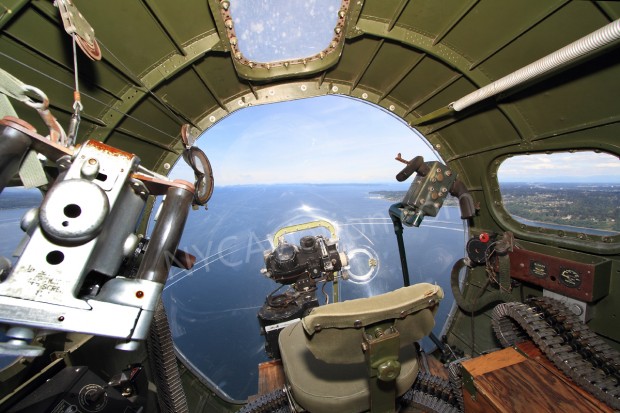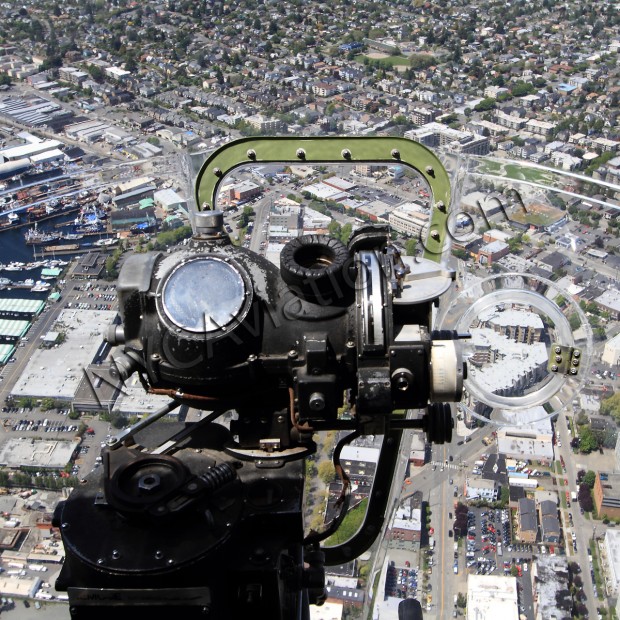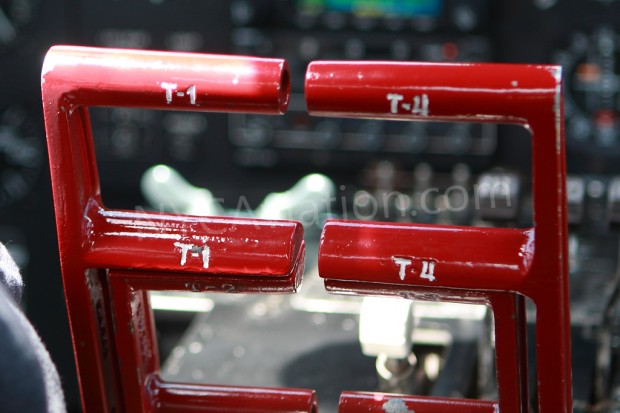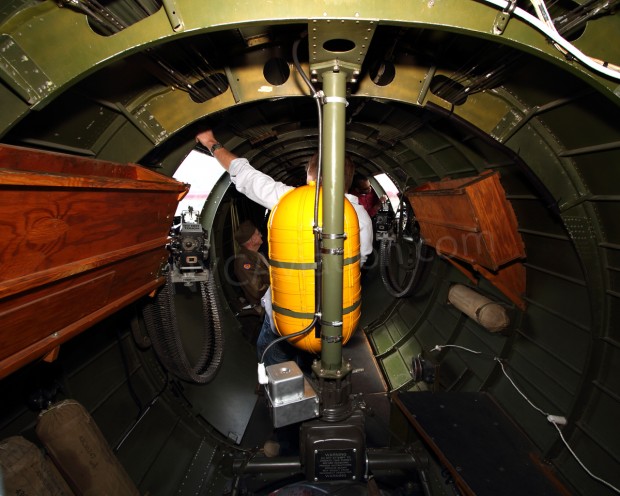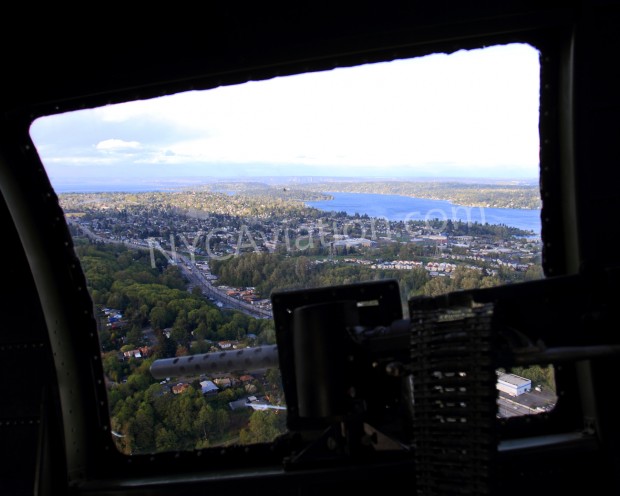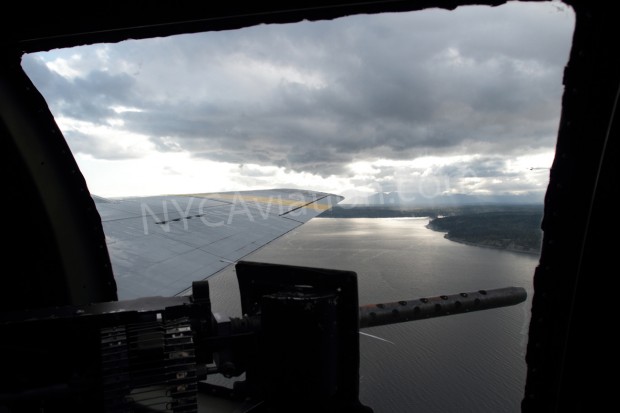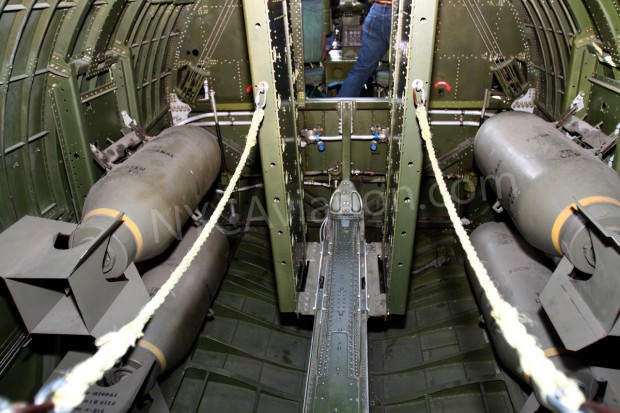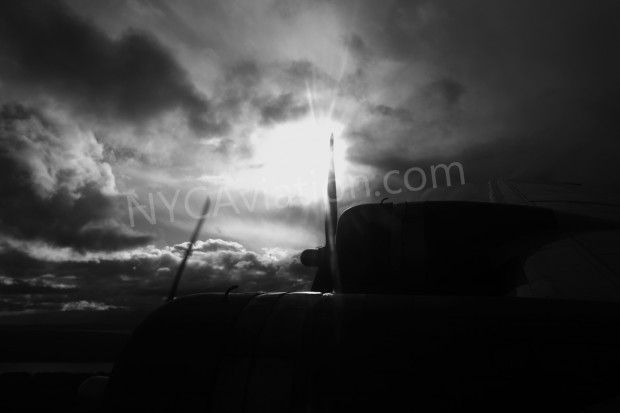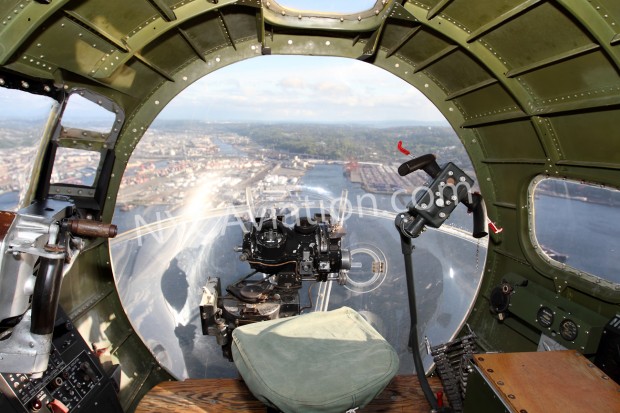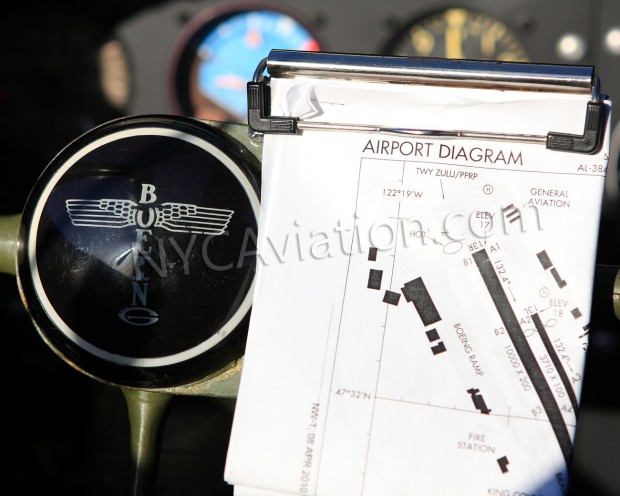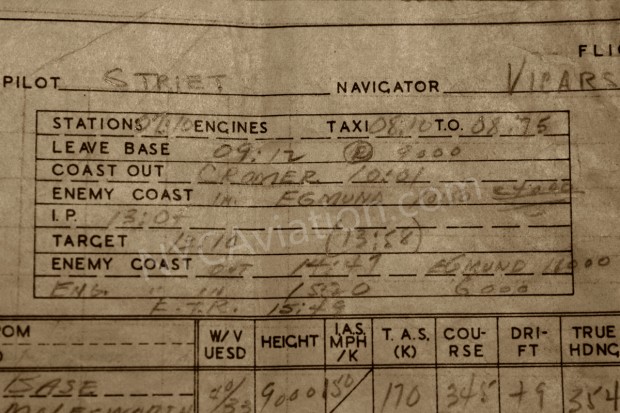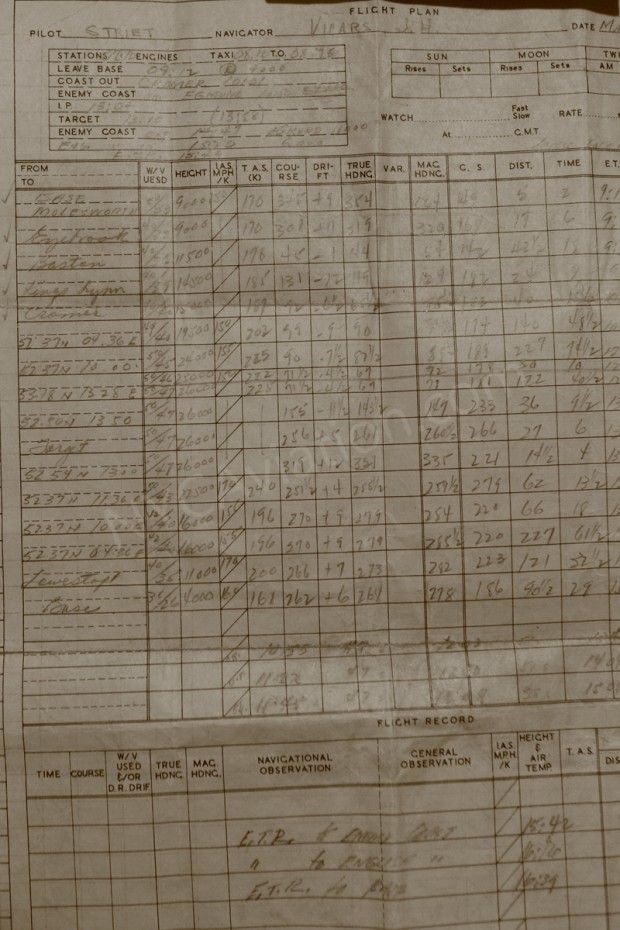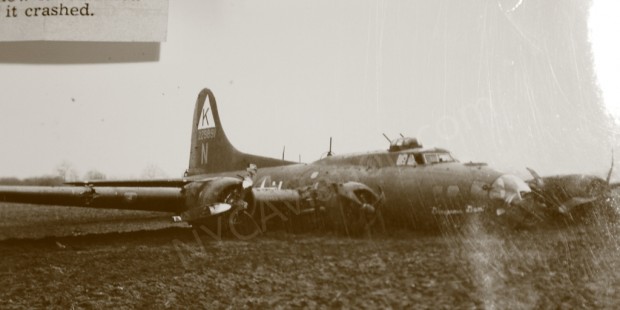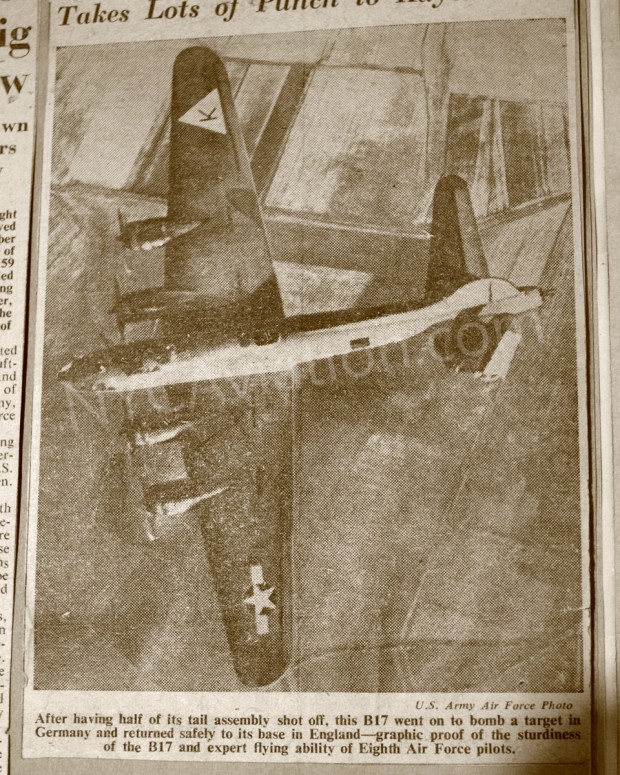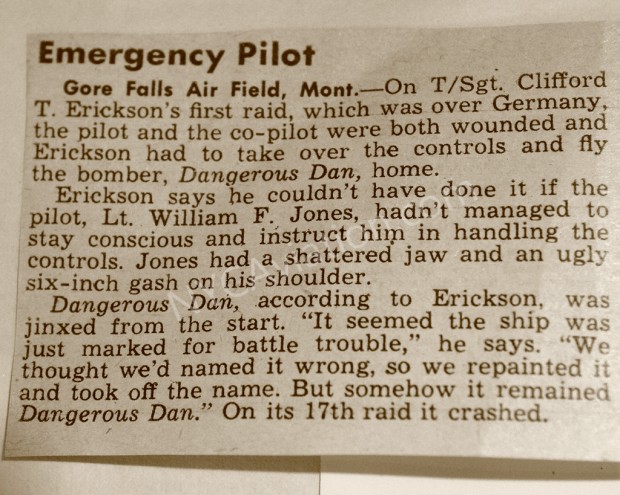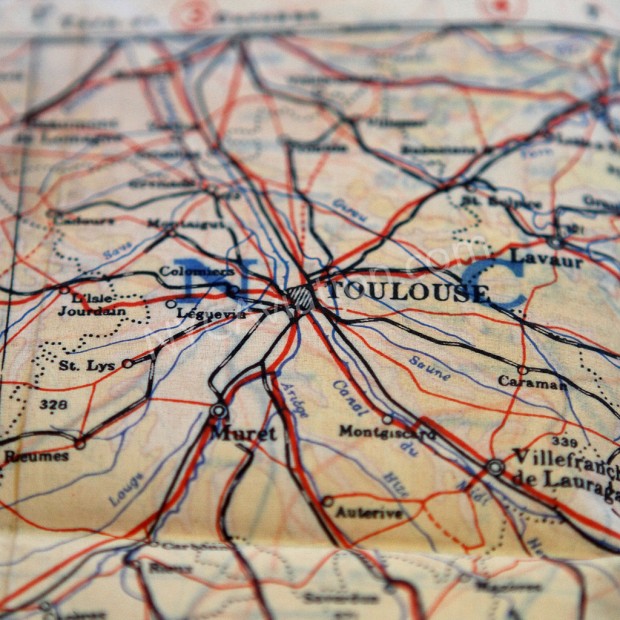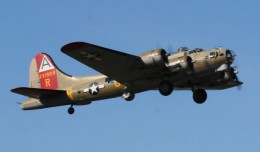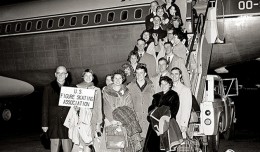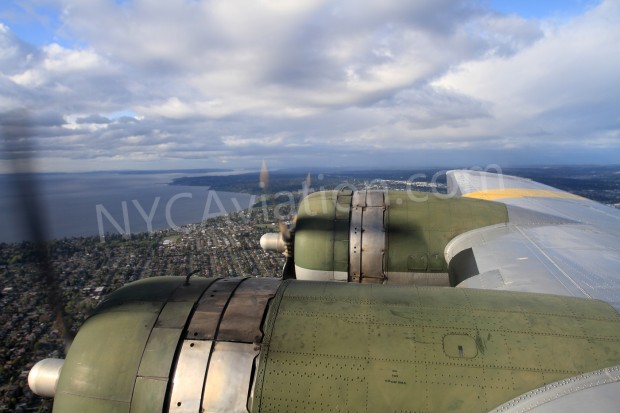
CLICK PHOTO for more shots from on board Aluminum Overcast and Liberty Belle, plus World War II-era clippings from Vicki Jung’s scrapbook
Flying at two thousand feet over Seattle, it was easy to forget the purpose for which the B-17 was built. Pressing my face flush against the Plexiglas nose, the serene waters of Lake Washington rushed underneath, captivating my attention. Were it not for the roar of the four 1200hp Wright Cyclone radial engines working hard behind me, I might have forgotten I was in a plane at all. As I pried myself back from the incredible panorama, reminders of the deadly duties the aircraft had been tasked with flooded my view: thirteen .50-caliber machine guns sat idle in their positions, a handful of dummy bombs in place in the bomb bay, and the Norden bomb sight glistening just aft of that incredible vantage point. It was hard to imagine being aboard a fully armed B-17 simultaneously battling against flak, fighters, and frostbite during the height of World War II. Those days, where men fought high in the skies over enemy territory are long behind us. But, each spring, a dwindling number of these aging warbirds start up their engines to kick off another season on the circuit to make sure we do not forget. They visit fields large and small alike offering tours, rides, and the chance to see a piece of history in action.
The birds presence draws a diverse crowd as history buffs, families, and veterans all line the fence from open to close. Being on board a flying Flying Fortress is experience to be remembered, and those with the ability to lighten their wallet a cool $400 or so will find the investment to be worth every penny. The aircraft, though considered a “heavy” in its day, is small in size and surprisingly narrow and cramped. If one were to close their eyes and ignore the radials buzzing away, they might be forgiven for thinking they were flying coach on…well…you choose your own airline. The plane is boarded from the back, near the waist-gunner’s positions. The large windows offer expansive, clear views on both sides of the aircraft, never mind the fun of pointing the now silent .50 caliber machine guns at whatever you so desire. Stepping over the ball turret, you pass through the radio room, decked out in original equipment. The jaunt from the radio room onto the flight deck requires a short, albeit harrowing, walk across the thin plank of metal that passes for a catwalk through the bomb bay. If you have the nerve to look down, one can often see through the cracks straight to the ground below. To make the walk doubly intimating, should you slip, the bomb bay doors are designed to give way to any load over 100lbs: hope you brought a parachute. The flight deck itself is relatively roomy in comparison. The pilots enjoy a wide perspective on the landscape around them, and it’s quite something to be up close with the crew at work. As one will quickly see, the front office is not quite the same as it was in 1945. Several changes were needed to bring them up to snuff, including the addition of GPS along with several other glass elements. A shimmy down the hatch between the pilots brings you into the bombardier & navigators compartment. Arguably the best seat in the house, the Plexiglas nose offers incredible nearly 180 degree views of anything ahead of you. While best enjoyed in flight, many of the crews offer ground tours during their stay for a small fee. Either one is an experience you won’t soon forget.
Stories to Tell
While flying on the plane, taking a ground tour, or even just watching from the fence is an experience in itself, the legend of the Flying Fortress wouldn’t be nearly as legendary if it weren’t for the thousands of air crews, mechanics, and Rosie the Riveters among others who worked and fought hard on the B-17 day in and day out. Though the number of veterans becomes fewer every year, many still turn out to see the plane they served on and to reminisce about their experiences some 65 years ago. Many of them bring their children and grandchildren, showing them the aircraft they served with during the war and telling stories. Others come on behalf of veterans who can no longer come.
Enter Vicki Jung. Vicki came to Boeing Field to fly on Liberty Belle on behalf of her father, First Lieutenant Joel H Vicars, Jr, who passed away in 1972. After spending years combing through her fathers extensively detailed war-time scrapbook, Ms Jung decided it was time to get on board, “sit there in that seat and,…reflect on what it must have been like.” She took his scrapbook with her on board the flight, which still had her on cloud nine when we met to delve into the book a few weeks later.
While the war was never a popular topic of discussion while growing up, Ms Jung took up the mantle when her mother passed to tell her fathers story. First Lieutenant Vicars, Jr was inducted into the then US Army Air Force in the spring of 1942. After attending the Army Air Forces Bombardier School at the Army Air Field in Deming, NM, he shipped out to England and served with the US Army Air Corp, 524th Bombardment Squadron, 379th Bombardment Group (H). He flew on twenty-five missions from his first on December 16th, 1943 over Bremen Germany, to his last on March 9th, 1944 over Berlin. After he completed his tour of duty he noted to the press that his 18th mission was the closest call, after a pair of flak shells landed in the bomb bay but thankfully failed to go off. First Lieutenant Vicars painstakingly documented every mission with photos, newspaper clippings, and personal notes adorning every page. He even kept the original handwritten flight plan from his last mission, along with a silk map of Europe detailing escape routes that he would’ve kept tucked away in his jacket should a bail out be necessary. Pictures of his fellow service-men and friends dotted every page, and notes would sometimes tell stories of heroic returns to base, injuries, or final flights. Ms Jung was able to contact a good number of these men, collecting their stories about their service and about her father. Her father’s name is now written in permanent ink on the rear main entrance of the Liberty Belle along with the names of dozens of other veterans and relatives on behalf of their veterans who have flown with the aircraft.
The story of the B-17 as an aircraft is impressive to be sure, and with the 75th anniversary coming up shortly, many a testament to the frame will be written. But without the stories of men like First Lieutenant Vicars, the B-17 would just be a plane. It’s the thousands of lives that the B-17 touched, and the work of historians and relatives, like Ms Jung, that give life to the aircraft today and keep the legend of the Flying Fortress going.

CLICK PHOTO for more shots from on board Aluminum Overcast and Liberty Belle, plus World War II-era clippings from Vicki Jung’s scrapbook.
NYCAviation would like to think Scott Maher and the crew of the Liberty Belle, Tony Caruso of the Cascade Warbirds and the crew of Aluminum Overcast, Seattle’s Museum of Flight, and Vicki Jung for their contributions to this article.



